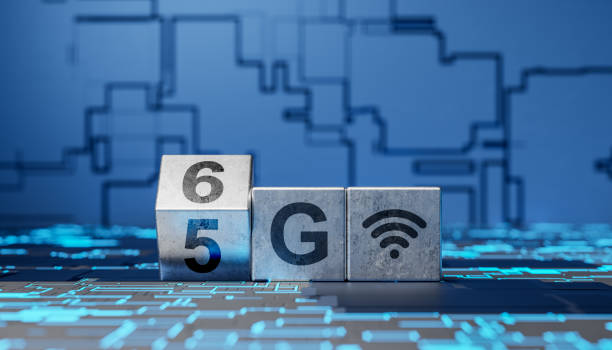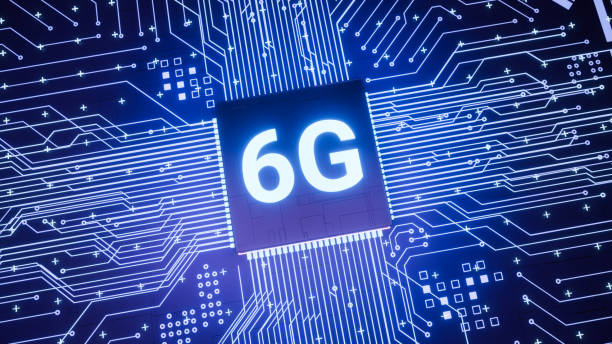In the ever-evolving landscape of telecommunications, we’ve witnessed remarkable transformations from 1G to 5G. As 5G networks continue to expand globally, researchers, tech companies, and telecommunication experts are already setting their sights on the next frontier: 6G technology. But when can we realistically expect 6G to become a reality? Let’s explore the timeline, potential capabilities, and challenges ahead.

The Path from 5G to 6G
Historically, each generation of wireless technology has emerged approximately every decade. We saw 1G in the 1980s, 2G in the 1990s, 3G in the 2000s, 4G in the 2010s, and 5G began commercial deployment around 2019-2020. Following this pattern, 6G networks might be expected around 2030.
Many major telecommunications companies and research institutions have already begun investing in 6G research and development:
- China launched a satellite in late 2020 to test potential 6G transmission technologies
- South Korea announced plans to commercially deploy 6G by 2028-2030
- Japan aims to implement 6G by 2030
- The European Union has initiated substantial funding for 6G research projects
- The United States has established multiple research initiatives focused on developing 6G technologies

What Will 6G Offer?
While 5G brought significant improvements in speed, capacity, and latency, 6G promises to take these advancements to unprecedented levels
Speed and Capacity: Experts predict 6G networks might reach speeds of up to 1 terabit per second (Tbps) – approximately 100 times faster than 5G. This extraordinary speed could enable downloading multiple high-definition movies in seconds.
Ultra-Low Latency: While 5G aims for latency of 1 millisecond, 6G might reduce this to microseconds, creating virtually instantaneous communication essential for critical applications like remote surgery, autonomous vehicles, and advanced robotics.
Expanded Spectrum Usage: 6G will likely utilize higher frequency bands, including sub-millimeter waves and terahertz (THz) frequencies, opening vast new spectrum resources.
Integrated Intelligence: Artificial intelligence will be deeply integrated into 6G, creating networks that can self-optimize, predict network demands, and allocate resources with unprecedented efficiency.
Three-Dimensional Coverage: Unlike previous generations focused primarily on terrestrial coverage, 6G aims to provide seamless connectivity across ground, air, and space, integrating satellite networks with terrestrial infrastructure.
Beyond Communications: 6G Applications
The capabilities of 6G will extend far beyond faster smartphones
Immersive Extended Reality: 6G could enable truly immersive virtual and augmented reality without bulky headsets, potentially through holographic communications.
Digital Twins: Complete digital replicas of physical environments will be possible, revolutionizing fields from urban planning to healthcare.
Internet of Everything: 6G will connect not just devices but potentially everything in our environment, enabling new forms of sensing and interaction.
Autonomous Systems: Self-driving vehicles, drones, and robots will gain enhanced capabilities through 6G’s ultra-reliable, low-latency connectivity.
Precision Healthcare: Remote surgeries, continuous health monitoring, and personalized medicine will benefit from 6G’s reliability and speed.
Challenges on the Road to 6G
Despite the promising outlook, several significant challenges must be addressed
Technical Hurdles: The higher frequencies required for 6G face severe propagation limitations, including limited range and poor penetration through objects. New materials, antenna designs, and transmission technologies are needed.
Infrastructure Requirements: The dense network of small cells, combined with computing resources at the edge, will require massive investment.
Energy Efficiency: Higher frequencies and increased data processing demand substantial power. Sustainable solutions must be developed to prevent 6G from becoming an energy liability.
Standardization and Regulation: International agreement on standards and spectrum allocation will be critical but challenging amid geopolitical tensions.
Security and Privacy: With more connections and data flows, securing 6G networks while respecting privacy will be paramount.

The Realistic Timeline for 6G
While 2030 is often cited as the target date for initial 6G deployment, a more comprehensive timeline might look like this:
- 2020-2025: Foundational research and concept development
- 2025-2027: Establishment of initial standards and specifications
- 2027-2029: Early prototyping and testing
- 2029-2030: First limited deployments
- 2030-2035: Gradual commercial rollout and expansion
- 2035+: Widespread adoption and mature implementation
Conclusion
While 6G technology remains largely conceptual at this stage, the pattern of technological advancement suggests it will indeed become a reality around 2030. However, the initial deployments will likely be limited, with widespread adoption taking several more years.
As with previous generations, 6G will not merely be an incremental improvement but a transformative force that reshapes industries and creates entirely new possibilities. The journey from concept to reality will require collaboration across borders, industries, and disciplines.
For now, as 5G continues its global rollout, the foundations for 6G are being laid in research labs around the world. The next decade promises to be an exciting period of innovation in telecommunications, ultimately delivering capabilities that may seem like science fiction today but will become our reality tomorrow.




